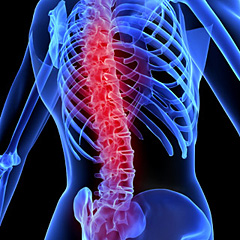
|  |  |  Health & Beauty | September 2008 Health & Beauty | September 2008  
Mexico Discovers Relief for Spinal Cord Injuries
 Tierramerica Tierramerica
go to original


| | Spinal cord injury (SCI) is damage to the nerves within the spinal canal, thereby affecting the spinal cord's ability to send and receive messages from the brain to the body's systems that control sensory, motor and autonomic function below the level of injury. A SCI can be complete or incomplete. In a complete injury, nerve damage obstructs every signal coming from the brain to the body parts below the injury. In an incomplete injury, some residual motor and sensory function remains below the level of SCI. | | |
Developed at the Autonomous Metropolitan University in Mexico City, a polymer shows promise to restore damaged spinal cords in human patients.

Mexican researchers have synthesized a polymer that promises to restore the electrical connections in a damaged spinal cord, which could help injured people recover mobility.

The technique has been tested in rats, in which 50 percent recovered the functioning of the spinal cord, researchers from the physics department of the Autonomous Metropolitan University (UAM) in Mexico City told Tierramérica.

There is great possibility that the polymer could be used in humans with spinal cord injuries, which, in conjunction with other medical treatments, could return mobility, according to Roberto Olayo, research coordinator.

The polymer they developed and synthesized in plasma is placed inside the spinal cord. It is biocompatible and helps the cells establish connections that had been interrupted by injury. |

 |
|  |



